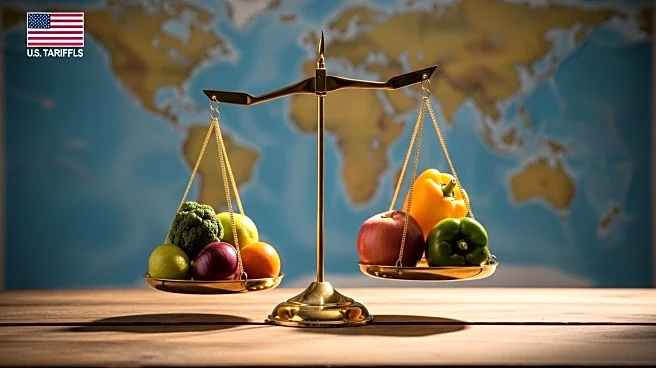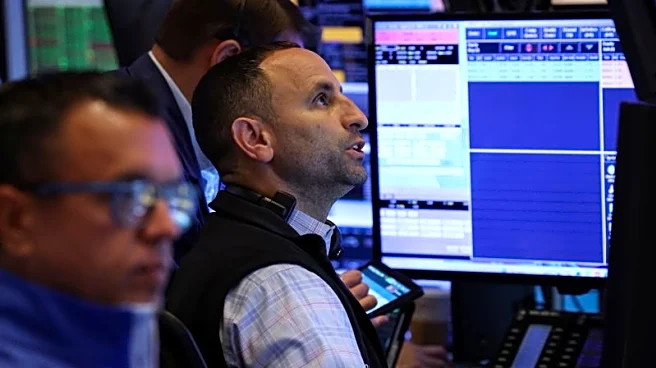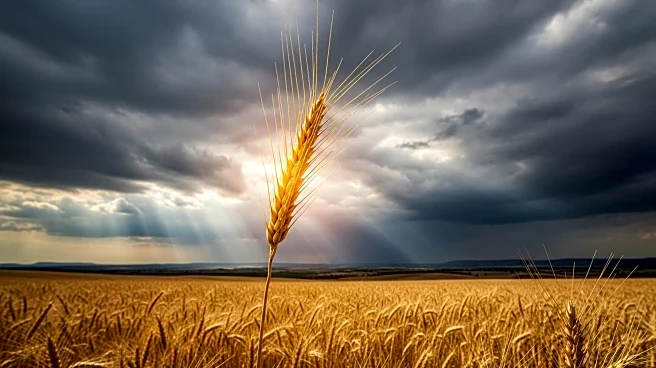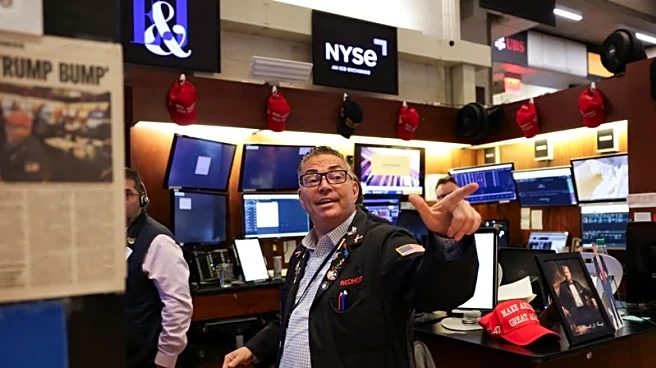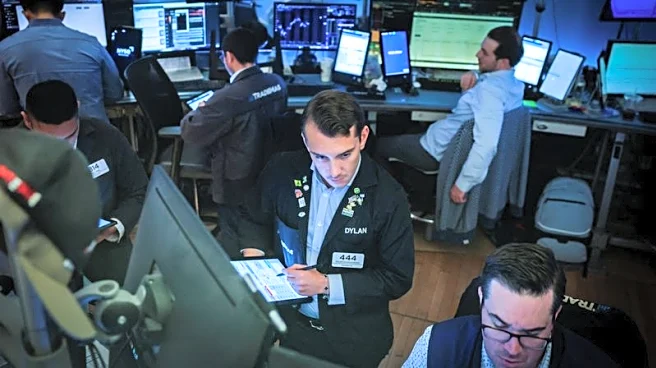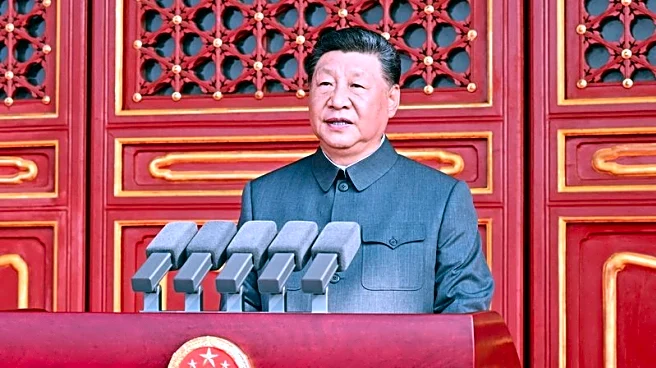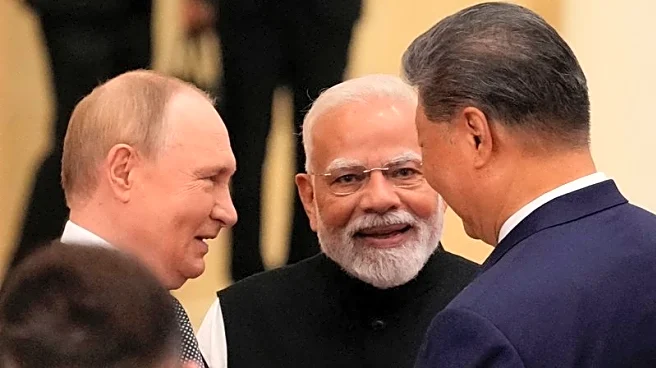What is the story about?
What's Happening?
The global wheat market is experiencing a bearish outlook due to a combination of structural and geopolitical factors. Oversupply and aggressive competition from both traditional and emerging exporters are contributing to declining prices and investor confidence. Russia and Australia have emerged as dominant players, with Russia projected to export 41.5 million metric tons in 2025/26, capturing 26% of the global market. Australia follows closely, leveraging its proximity to Asia and high-quality wheat. The U.S., once a leading exporter, now ranks fourth, facing domestic supply gluts and logistical challenges. Meanwhile, Canada remains a significant exporter despite droughts affecting key growing regions. This shift in export dynamics is affecting trade flows, particularly U.S. exports to China, which face stiff competition from Russian and Australian suppliers.
Why It's Important?
The bearish outlook in the global wheat market has significant implications for U.S. grain traders and investors. The shift in export dynamics, with Russia and Australia dominating, challenges the U.S.'s traditional market position. This could lead to economic repercussions for U.S. farmers and exporters, as they face increased competition and potential loss of market share. Additionally, the imposition of tariffs by the Trump administration adds uncertainty, affecting speculative positions in U.S. wheat futures. The bearish sentiment is reflected in the decline of net speculative positions, indicating potential financial losses for investors. The situation underscores the need for strategic positioning and risk management in the face of geopolitical tensions and supply chain disruptions.
What's Next?
Short-term investors are advised to position for downside risk by shorting wheat futures while hedging against geopolitical uncertainties. The current price of wheat reflects these dynamics, but investors should remain vigilant to potential supply shocks, such as droughts in Canada or Australia, which could disrupt export hierarchies. Monitoring Russian export volumes and tariff developments will be crucial for anticipating market movements. Diversifying into alternative grains or regional futures markets may offer opportunities for mitigating risks and capitalizing on market volatility.
Beyond the Headlines
The evolving export landscape in the global wheat market highlights broader geopolitical and economic shifts. The dominance of Russia and Australia reflects changing trade alliances and strategic positioning in global agriculture. This could lead to long-term shifts in global food security and trade policies, as countries reassess their agricultural strategies in response to competitive pressures. The situation also raises ethical considerations regarding the impact of trade wars and tariffs on global food supply and access.
AI Generated Content
Do you find this article useful?


